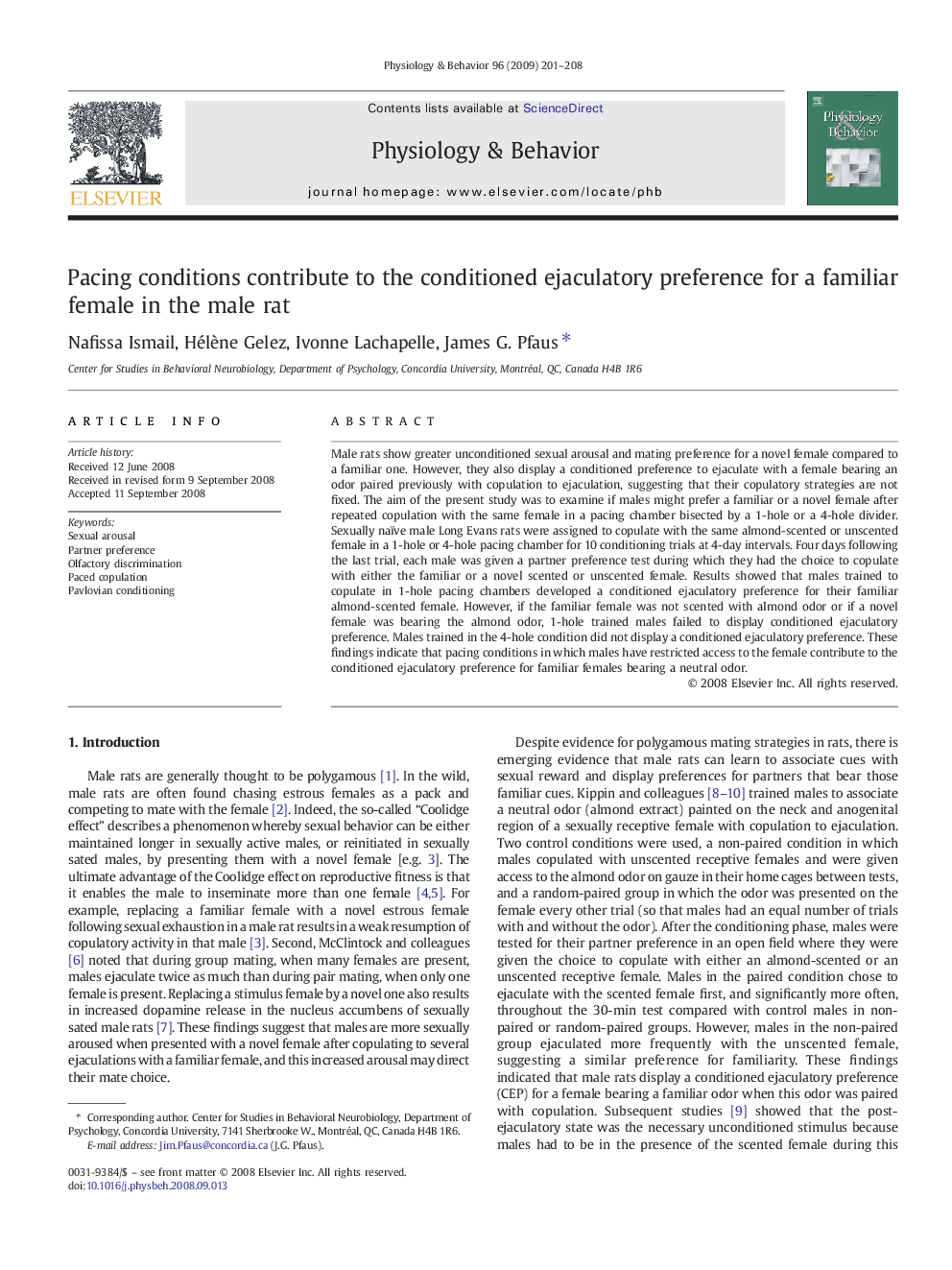| کد مقاله | کد نشریه | سال انتشار | مقاله انگلیسی | نسخه تمام متن |
|---|---|---|---|---|
| 2845212 | 1166383 | 2009 | 8 صفحه PDF | دانلود رایگان |

Male rats show greater unconditioned sexual arousal and mating preference for a novel female compared to a familiar one. However, they also display a conditioned preference to ejaculate with a female bearing an odor paired previously with copulation to ejaculation, suggesting that their copulatory strategies are not fixed. The aim of the present study was to examine if males might prefer a familiar or a novel female after repeated copulation with the same female in a pacing chamber bisected by a 1-hole or a 4-hole divider. Sexually naïve male Long Evans rats were assigned to copulate with the same almond-scented or unscented female in a 1-hole or 4-hole pacing chamber for 10 conditioning trials at 4-day intervals. Four days following the last trial, each male was given a partner preference test during which they had the choice to copulate with either the familiar or a novel scented or unscented female. Results showed that males trained to copulate in 1-hole pacing chambers developed a conditioned ejaculatory preference for their familiar almond-scented female. However, if the familiar female was not scented with almond odor or if a novel female was bearing the almond odor, 1-hole trained males failed to display conditioned ejaculatory preference. Males trained in the 4-hole condition did not display a conditioned ejaculatory preference. These findings indicate that pacing conditions in which males have restricted access to the female contribute to the conditioned ejaculatory preference for familiar females bearing a neutral odor.
Journal: Physiology & Behavior - Volume 96, Issue 2, 16 February 2009, Pages 201–208